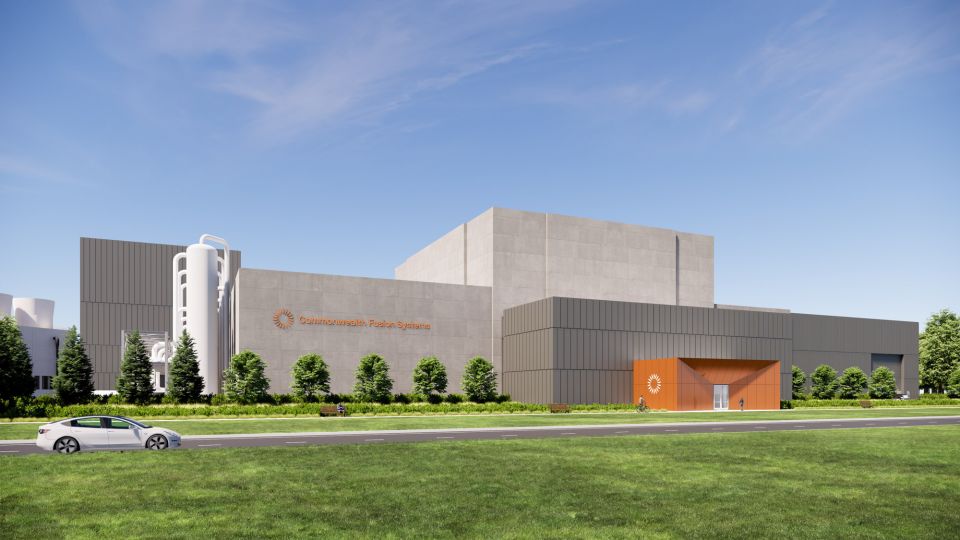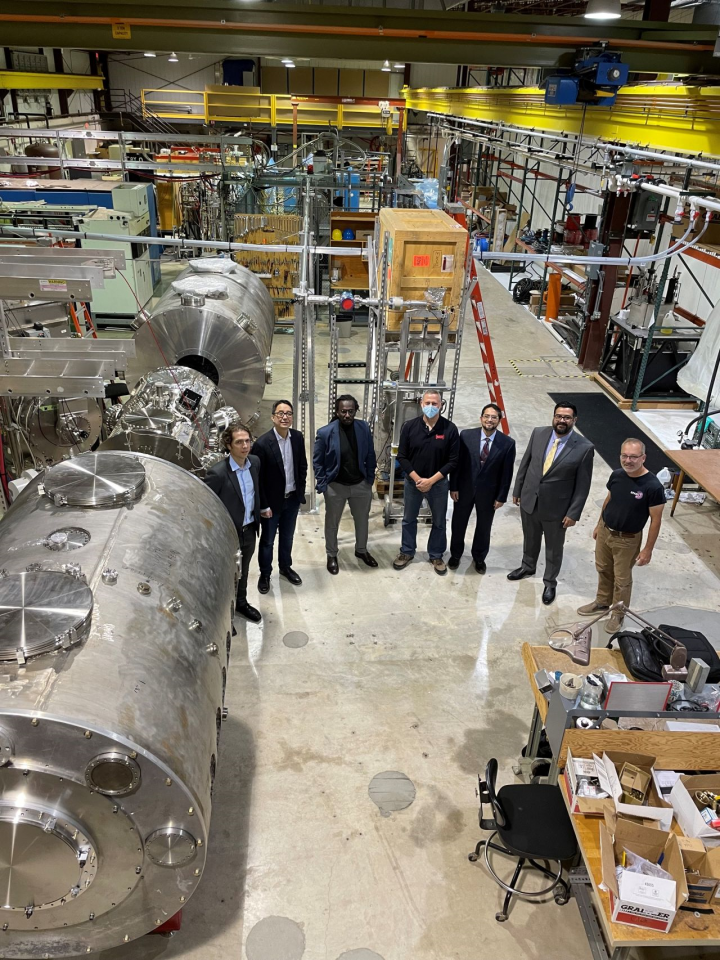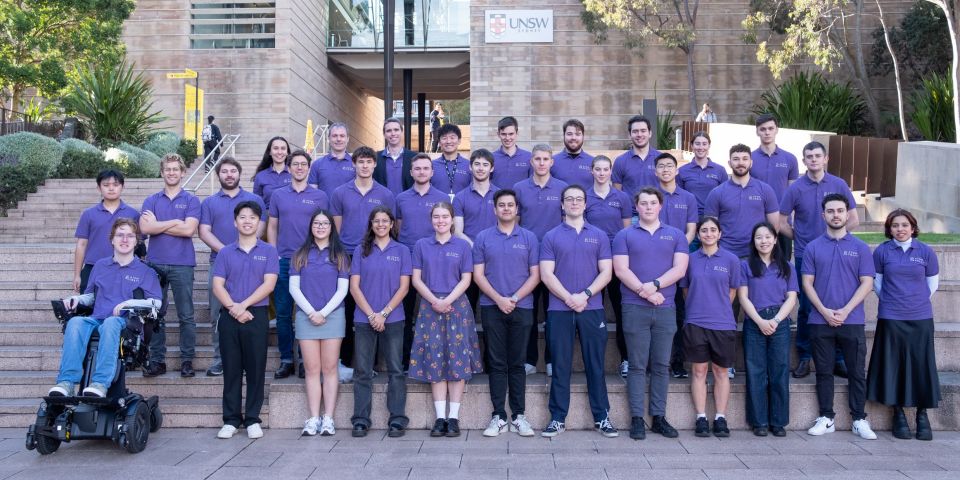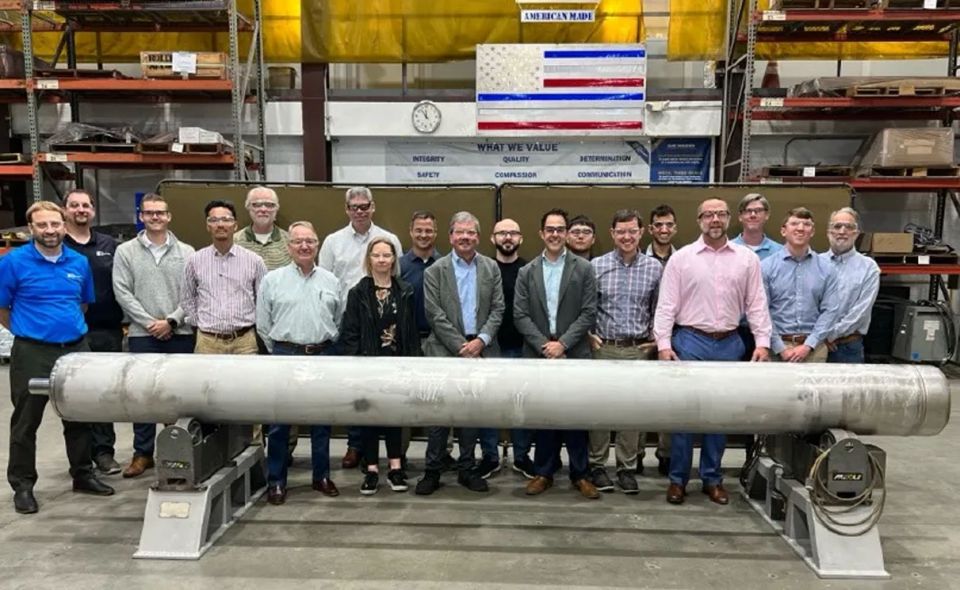Zap Energy hits 37-million-degree electron temperatures in compact fusion device

Zap Energy announced April 23 that it has reached 1-3 keV plasma electron temperatures—roughly the equivalent of 11 to 37 million degrees Celsius—using its sheared-flow-stabilized Z-pinch approach to fusion. Reaching temperatures above that of the sun’s core (which is 10 million degrees Celsius temperature) is just one hurdle required before any fusion confinement concept can realistically pursue net gain and fusion energy.
Zap Energy’s FuZE (for Fusion Z-pinch Experiment) is the simplest, smallest, and lowest-cost device to reach such temperatures, according to the company. The research paper "Elevated Electron Temperature Coincident with Observed Fusion Reactions in a Sheared-Flow-Stabilized Z Pinch,” published April 8 in Physical Review Letters, details measurements made on FuZE.
The technology: Unlike the two mainstream fusion approaches that have been the focus of the majority of fusion research in recent decades—magnetic confinement and inertial confinement—Zap Energy uses a Z-pinch, where large electric currents are channeled through a thin filament of plasma. The conducting plasma generates the electromagnetic fields that both heat and compress it. Z-pinch fusion has been studied since the 1950s, and while plasmas were achieved, they did not last for long. Zap Energy says it has solved that problem by applying a dynamic flow through the plasma in a process called sheared-flow stabilization. Because Z-pinch fusion doesn’t require powerful magnets or lasers, that could help keep the costs of a fusion energy plant down, the company said.
On temperatures: Plasma temperatures can be measured in units of electron volts, with separate measurements for the plasma’s ions and electrons. Since the ions (or nuclei) are more than a thousand times heavier than the electrons, the two components of the plasma can heat and cool at different rates, according to Zap Energy. Electron temperatures can rapidly cool a plasma—“like ice cubes in a hot soup”—limiting the heating of the fusible ions. The electrons in the FuZE plasma were shown to be as hot as the ions, indicating that the plasma is in a healthy thermal equilibrium, according to Zap Energy.
The temperatures reported in the paper were measured by an ARPA-E–backed team from Lawrence Livermore National Laboratory and University of California–San Diego that applied skills in a plasma measurement to develop a portable Thomson scattering device. To perform Thomson scattering, scientists use a very bright, very fast laser to fire a pulse of green light into the plasma, which scatters off the electrons and provides information about their temperature and density.
The detailed measurements showed that electron temperatures and fusion neutron production peaked simultaneously, supporting the idea of a fusing plasma in thermal equilibrium.
“These are meticulous, unequivocal measurements, yet made on a device of incredibly modest scale by traditional fusion standards,” said Ben Levitt, vice president of research and development at Zap. “We’ve still got a lot of work ahead of us, but our performance to date has advanced to a point that we can now stand shoulder to shoulder with some of the world’s pre-eminent fusion devices, but with great efficiency, and at a fraction of the complexity and cost.”
ARPA-E: The research behind FuZE was originally funded by the Department of Energy’s Advanced Research Projects Agency–Energy (ARPA-E) at the University of Washington. The device moved to Zap Energy’s R&D facilities in 2020, soon after the company was founded. The results just announced were collected in 2022 under an ARPA-E project that involved researchers from LLNL and UCSD.
“Over many decades of controlled-fusion research, only a handful of fusion concepts have reached 1-keV electron temperature,” noted Scott Hsu, lead fusion coordinator at the DOE and former ARPA-E program director. “What this team has achieved here is remarkable and reinforces ARPA-E’s efforts to accelerate the development of commercial fusion energy.”
Zap Energy was one of eight fusion technology companies chosen for a public-private Milestone-Based Fusion Development Program to develop fusion pilot plant designs and resolve related scientific and technological challenges within five to 10 years, and one of two companies selected that uses an "innovative concept" (the other was Realta Energy).
From FuZE to FuZE-Q: In 2022, the same time these results from FuZE were collected, Zap commissioned its next-generation device, FuZE-Q. While early results from FuZE-Q are still forthcoming, the device has a power bank with ten times the stored energy as FuZE and capacity to scale to much higher temperatures and densities. Meanwhile, parallel development of power plant systems is also underway. Zap Energy routinely gathers Thomson scattering data on FuZE-Q.











